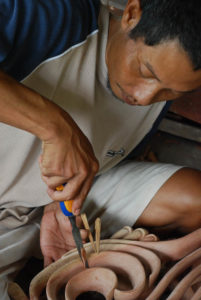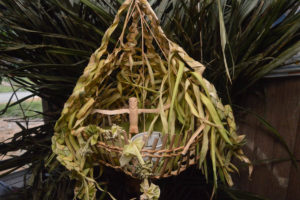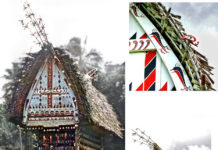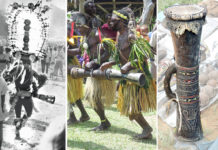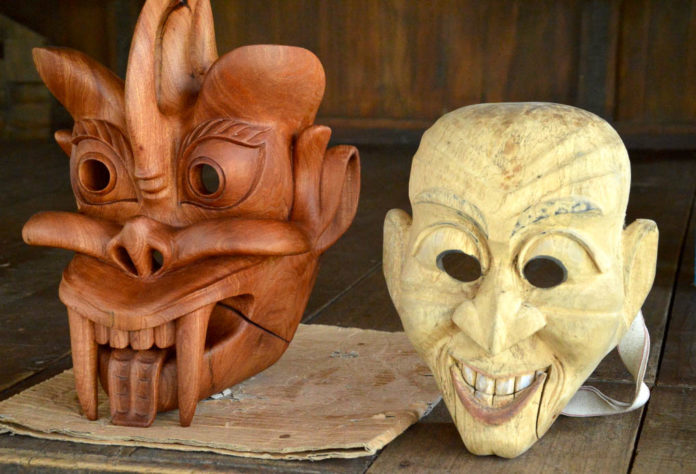
Woodcarving is practised by only two groups of indigenous Orang Asli in Peninsular Malaysia: the Mah Meri in Kampung Sungai Bumbun, Carey Island, Selangor (about 50 carvers), and the Jah Hut in Kampung Sungai Kol and Kampung Terbol in Krau, Pahang (10 carvers). Both groups once practised traditional beliefs that required the use of simple spirit effigies (Jah Hut: sepili) carved from palm wood to cast out illnesses during ritual healing ceremonies conducted by a shaman.
In the late 1950s, the then Department of Aboriginal Affairs, recognising the commercial potential of Orang Aslia woodcarving, actively encouraged the production of sculptures based on the oral traditions of each ethnic group. Anthony Ratos is generally associated with the commercialization of Jah Hut sculptures, while artist Hoessein Enas is credited with helping to propagate Mah Meri wood arts.
For the Mah Meri, this meant visualizing their Ancestor’s stories (chita’ muyang) as three-dimensional sculptures and masks. The diversity of their animal, plant and humanoid ancestor spirits (muyang) are reflected in their carvings. One mask, carved from lightweight pulai wood (Alstonia spatulata), is used mainly in the jo-oh mask dance.
The Jah Hut, on the other hand, base their carving tradition on spirits that cause illnesses (bes). Just as there are many illnesses, there is a wide range of Jah Hut sculptures, many of them perceived as grotesque.
Mah Meri sculptures and commercial masks are made from a durable mangrove wood known as nyireh batu (Xylocarpus moluccensis), a reddish heartwood, while Jah Hut sculptures are made from several types of tropical hardwood, such as merbau and rengas. Both groups use chainsaws to fell trees and to hew the rough shape, while basic hand tools, such as chisels and mallets, are used for carving. The Mah Meri also employ some power tools. While woodcarving is mainly the domain of men, women are often tasked with the final polishing with sandpaper and the polishing with wax.
While Mah Meri woodcarvings have improved in quality over the years, Jah Hut carvings are now rare and of declining quality. The Anthony Ratos collection, which contains carvings by both ethnic groups, is housed in the Aboriginal Craft Museum in Kuala Lumpur, while Mah Meri woodcarvings can be purchased in some craft shops and directly from workshops on Carey Island.


